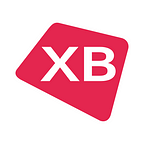Leveraging Traccar for Enhanced Fleet Management App Functionality
In the digital age, location data has become a crucial resource for businesses. The ability to track vehicles, employees, or goods in real-time provides a competitive edge in managing logistics and ensuring the security of fleet management processes. Traccar, a popular open-source GPS tracking application, is capable of performing these operations. However, while its basic version offers many advantages for fleet management companies, it may not always meet the unique needs of specific businesses.
In this context, product extension using services becomes a vital tool for creating tailored solutions. By leveraging a product, companies can add specific features, enhance performance, and ensure seamless integration with other business systems.
Let’s say you need a fleet management application. You approach a company that specializes in outsourced software development and possesses the expertise necessary to extend Traccar’s capabilities and adapt it to meet clients’ specific requirements, because you want to have a customized and efficient GPS tracking solution. There is a way to do so. Therefore, let’s see what you may expect from such a collaboration.
Enhancing Traccar with Services
Service architecture allows for the creation of scalable and flexible systems that can easily integrate with other services and adapt to changing business requirements. By breaking down functionalities into smaller, manageable services, we can provide more targeted and efficient GPS tracking and fleet management solutions. To extend the functionality of Traccar, we propose developing the following services:
- External System Integration. For many companies, it’s crucial that the GPS tracking system integrates with other business applications, such as warehouse management systems (WMS), ERP systems, or CRM. This service will provide the necessary interfaces and protocols for data exchange with external systems. It can also include APIs for custom integrations, allowing businesses to seamlessly connect Traccar with their existing IT infrastructure and workflows.
- Data Analytics. This service will collect and process movement data, providing detailed reports and data visualization on fleet processes. For instance, we could create a dashboard showing vehicle routes, travel time, average speed, and route deviations. This service can also include predictive analytics, helping businesses anticipate future trends based on historical data. For example, logistics companies can optimize delivery routes by predicting traffic patterns or identify potential maintenance needs for vehicles based on usage data.
- Reporting. This service will generate specialized reports for different management levels, from daily operational reports to strategic analytic summaries for top management. Customizable reporting options can allow managers to define specific metrics and KPIs, ensuring they have access to the data that is most relevant to their decision-making processes.
- Notification. This service will handle sending notifications through various channels (SMS, email, push notifications) based on predefined conditions, such as speeding, prolonged stops, or entering dangerous areas. By incorporating machine learning algorithms, the notification system can become more intelligent, learning to prioritize alerts based on the context and history of events, thus reducing the chances of alert fatigue among users.
- Maintenance and Diagnostics. This service will track the health and status of tracked assets, providing alerts for scheduled maintenance or potential issues. It can help prevent breakdowns and extend the lifespan of vehicles by ensuring timely maintenance based on usage patterns and diagnostic data.
Basically hereinabove services can be enhanced with more functionality useful for particular business cases.
Source: Traccar-Based GPS Tracking System
Customization Process and Team Roles
The process of developing an expanded fleet management solution based on Traccar involves several stages, each requiring specific expertise and collaboration in requirement of analysis, architecture, service development, integration and testing, user interface development, deployment and support. Let’s clarify the entire procedure step by step.
Continue reading: https://xbsoftware.com/blog/using-traccar-to-boost-fleet-management-app/
